Renewable Energy: The Clean Facts
Feb 20th 2024
Renewable Energy: The Clean Facts
The drive for sustainability has ushered in an era where renewable energy sources are not just a promising technology but an axis on which our future turns. The clamor for cleaner, more efficient power solutions has never been louder, and with good reason. As the implications of climate change grow more daunting, individuals, businesses, and governments are all looking to renewable energy to mitigate environmental damage and secure a sustainable path forward.
This comprehensive exploration is designed to arm you with the crucial information you need to understand, advocate for and perhaps even implement renewable energy solutions. From the environmental impact to the economic benefits, types of renewable sources, technological advancements, policy and regulations, and the future landscape, we take a deep dive into the clean energy revolution.

Understanding the Basics of Renewable Energy
Renewable energy comes from sources that are naturally replenished, unlike the traditional fossil fuels that are finite and damaging to the environment. The production of renewable energy relies on technology that harnesses these sources which include sunlight, wind, water, geothermal heat, and organic materials. This renewable approach offers a steady and inexhaustible stream of energy without the carbon footprint synonymous with coal, oil, and natural gas.
Why Renewable Energy Matters
The urgency of transitioning to renewable energy sources is underscored by the clear and present danger of climate change. By reducing greenhouse gas emissions, preserving natural resources, and minimizing pollution, renewable energy serves as a linchpin for a sustainable future. This shift is as much about environmental ethos as it is about economic and geopolitical calibrations.
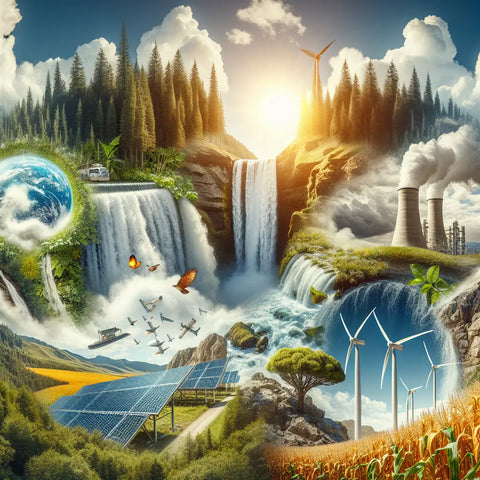
Types of Renewable Energy
Solar Power
Capturing and Converting Sunlight into Electricity
Solar energy technology utilizes photovoltaic cells to transform sunlight directly into electricity. This is done through the photoelectric effect — the emission of electrons when photons strike the surface of the solar panels. The electricity generated can power anything from individual appliances to entire cities.
Benefits and Drawbacks of Solar Energy
The benefits of solar power are vast, including abundant availability, modularity, and scalability of systems, as well as the reduction of electricity costs. However, the drawbacks typically revolve around the variability of sunlight and the initial high cost of installation and materials, although these have been steadily declining in recent years.
Wind Power
Generating Power Through Wind Turbines
Wind energy harnesses the kinetic energy of moving air through wind turbines that spin in response to air currents. This rotational motion is then converted into electricity using a generator. Wind farms can range from a few turbines to hundreds, often located onshore or offshore, and can significantly contribute to the energy grid.
Advantages and Limitations of Wind Energy
The advantages of wind power include a low environmental impact per unit of electricity generated and a relatively low operational cost once the turbines are installed. However, wind power is geographically dependent and the visual and noise impacts can pose challenges in some settings.
Hydropower
Electricity Production from Water Flow
Hydropower, the most widely used renewable energy source, employs the energy from moving water to generate electricity. This can include huge hydroelectric dams that store large volumes of water to smaller run-of-river or tidal power plants that utilize natural water flow for power generation.
Pros and Cons of Using Water as an Energy Source
The advantages of hydropower are its immense scale and reliability, as well as its storability which allows for energy generation on-demand. On the other hand, large-scale hydropower projects can have significant environmental consequences and can be disruptive to local ecosystems and communities.
Biomass Energy
Energy from Organic Materials
Biomass energy is derived from organic materials that were once living, such as plants, wood, and waste. This energy can be used for heating, electricity, and fuel production. The decomposition process of these materials releases energy which can be harnessed via combustion or other conversion processes.
The Balance of Benefits and Challenges
The use of biomass can be sustainable if the energy source is produced responsibly, such as through waste-to-energy processes, and can help to reduce waste and provide a low-cost energy source. However, there are concerns about the impact on food supplies and the potential for deforestation, which needs to be carefully managed.
Geothermal Energy
Heat Extraction from the Earth's Interior
Geothermal energy is the heat from the Earth. It's clean and sustainable and can be harnessed for electricity generation, and for heating and cooling purposes. The most common Geothermal power plant uses the steam and hot water from beneath the Earth's surface to generate electricity.
The Upside and Downside of Geothermal Solutions
The benefits of geothermal energy are its reliability, sustainability, and the small land footprint of power plants. A limitation is its geographic dependency, as high-temperature geothermal resources are not uniformly distributed, and the potential for induced seismic activity in some cases.
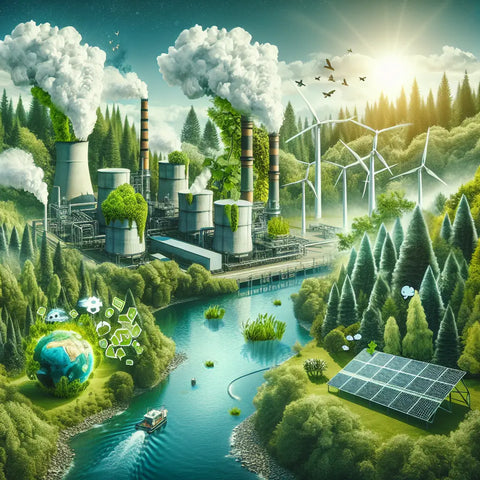
Environmental Impact
Reducing Greenhouse Gas Emissions
Transitioning to renewable energy has the primary environmental benefit of significantly reducing greenhouse gas emissions which drive climate change. By replacing fossil fuels with renewable alternatives, we can curtail the warming of our planet and work toward fulfilling international agreements such as the Paris Agreement.
Preserving Natural Resources
Renewable sources use resources that are naturally replenished and do not deplete over time. This stands in stark contrast to fossil fuels, which are finite. By embracing renewables, we safeguard natural landscapes and prevent the disruption of ecosystems caused by resource extraction and exploitation.
Minimizing Pollution
The process of burning fossil fuels for energy is a major source of air and water pollution. The switch to cleaner energy options such as wind, solar, and hydro can significantly reduce harmful emissions such as sulphur dioxide, nitrogen oxides, and particulate matter, leading to better air quality and public health outcomes.

Economic Benefits
Job Creation in the Renewable Energy Sector
The renewable energy industry is a significant and growing source of jobs worldwide. Activities such as manufacturing, installation, maintenance, and research and development in the renewable sector create jobs at a higher rate compared to the traditional energy sector.
Cost-Effectiveness of Renewable Energy
While the initial investment in renewable energy infrastructure can be higher than that of traditional sources, the ongoing operational costs are generally lower. Over time, as technology advances and economies of scale are realized, the costs of renewables continue to decrease, leading to cost-effective, long-term energy solutions.
Energy Independence and Security
Adopting renewable energy technologies can reduce a country's reliance on imported fossil fuels. By diversifying the energy mix, nations can achieve greater security in their energy supply, which is particularly relevant in times of geopolitical instability and fluctuating oil prices.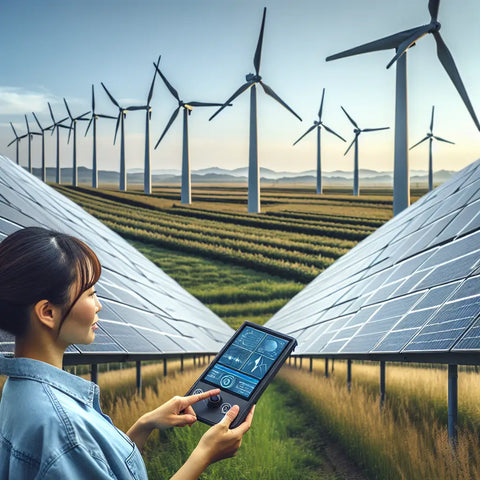
Technological Advancements
The field of sustainable energy is dynamic, with rapid advancements continually expanding the efficiency and applicability of renewable sources. These innovation strides are crucial in making renewable energy not only viable but also indispensable.
Innovations in Solar Panel Technology
Recent innovations in solar panel technology include the development of more efficient photovoltaic cells, like perovskite and bifacial panels, as well as the integration of efficient concentrating solar power systems that track the sun throughout the day to maximize energy yield.
Advancements in Wind Turbine Design
Cutting-edge wind turbine designs feature larger blades that can capture more wind energy and the use of digital technologies to predict and optimize energy generation. In addition, floating wind farms are paving the way for expanding offshore wind capabilities.
Breakthroughs in Energy Storage Solutions
The industry is making significant strides in energy storage, addressing the intermittency challenge of renewable sources. Battery technologies have seen improvements in capacity and longevity, while other methods such as compressed air storage and molten salt storage have emerged as viable solutions for grid-scale energy storage.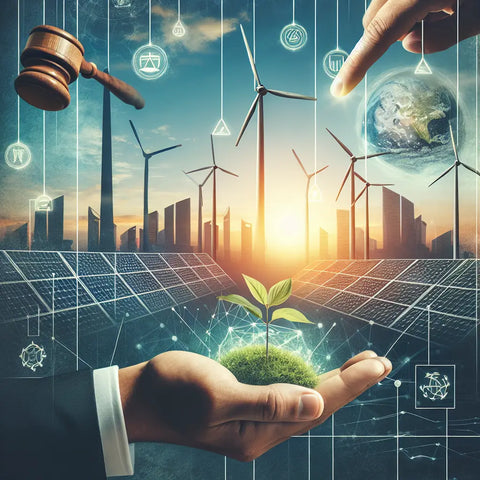
Policy and Regulation
Government policies and regulations play a pivotal role in shaping the energy landscape. Incentives, mandates, and international agreements can accelerate the adoption of renewable energy and level the playing field for sustainable energy technologies.
Government Incentives for Renewable Energy
Governments often provide incentives for the implementation of renewable energy, such as tax credits, rebates, and feed-in tariffs. These policy mechanisms are designed to make clean energy more affordable and attractive for consumers and businesses alike.
Renewable Portfolio Standards
Renewable portfolio standards (RPS) are regulations that require a specified percentage of energy to come from renewable sources. By establishing these benchmarks, governments create a market for renewable energy and encourage investment in the sector.
International Agreements and Commitments
Global agreements such as the Paris Agreement set targets for reducing greenhouse gas emissions and promoting renewable energy deployment at a national level. These commitments foster an international climate where the adoption of clean energy is seen as imperative and incentivized.
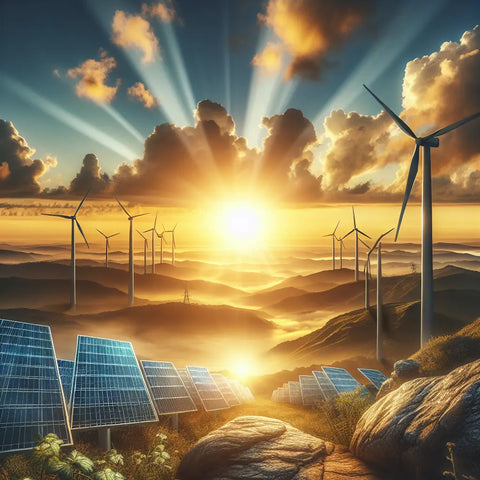
Overcoming Challenges
While the benefits of renewable energy are clear, the path to a fully sustainable energy future is not without obstacles. Addressing these challenges is essential for a smooth and effective transition to a world powered by clean, renewable energy.
Intermittency and Grid Integration
The variability of some renewable sources, like wind and solar, can present challenges in matching energy supply with demand. Solutions include the expansion of energy storage, improved forecasting, and the development of 'smart' grids capable of balancing fluctuations in real-time.
Addressing Public Perception and Misconceptions
Public awareness and support are critical in driving the adoption of renewable energy. Addressing misconceptions about the reliability and affordability of renewable energy, as well as fostering a positive attitude towards change, can help overcome resistance to the transition.
Infrastructure and Investment Requirements
The massive scale of the required infrastructure and the capital investment needed for renewable energy deployment is a significant hurdle. Public and private financing, along with the development of robust energy markets, can help mobilize the necessary resources to build and maintain clean energy systems.
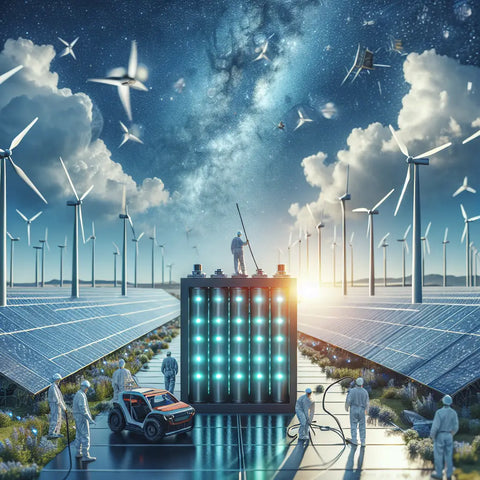
The Future of Renewable Energy
Looking ahead, renewable energy is poised to play a leading role in the global energy matrix. Industry forecasts and emerging trends paint a picture of a landscape increasingly dominated by clean and sustainable power solutions.
Growth Projections and Trends
Analyses and forecasts indicate strong growth in the renewable energy sector, with sharp increases in installed capacity and energy output. This trend is driven by falling technology costs, rising consumer demand, and supportive government policies.
Potential for Integration with Other Energy Sources
The integration of renewable energy with other energy sources, particularly through hybrid systems, offers synergistic benefits. Combining renewables with conventional power plants, energy storage, and smart grid technologies can enhance the stability and overall efficiency of the energy system.
Role of Renewable Energy in Climate Change Mitigation
The critical role of renewable energy in mitigating climate change cannot be overstated. By phasing out fossil fuels, we can significantly reduce emissions and limit global temperature rise, thereby contributing to a more sustainable future for our planet.
Conclusion
The shift to renewable energy is not just a technological transition—it is a fundamental reengineering of our energy systems, economies, and societies. By understanding and embracing the clean energy revolution, we empower ourselves and our communities to make a lasting, positive impact on the environment and our collective future.
Embracing the Transition to Renewable Energy
We are at the cusp of a new energy era, where the sun, wind, water, and Earth's heat can power our lives without compromise. The sooner we collectively commit to this change, the quicker we can reap the benefits of a cleaner, more sustainable world.
The Ongoing Evolution of Clean Energy Solutions
The evolution of renewable energy solutions is ongoing, marked by innovation, perseverance, and an unwavering commitment to sustainability. As the technologies mature and the obstacles are overcome, the promise of a renewable future grows ever brighter.
FAQs
What is the main advantage of renewable energy?
Renewable energy sources offer a sustainable and inexhaustible energy supply that does not deplete natural resources or contribute to climate change. They also have the potential to create new economic opportunities and reduce reliance on volatile international energy markets.
How does renewable energy contribute to a sustainable future?
Renewable energy provides a path to sustainable development by decoupling economic growth from environmental degradation. It enables the reduction of greenhouse gas emissions, preservation of natural resources, and improved energy security, laying the foundation for a balanced and enduring global economy.
What are the key barriers to the widespread adoption of renewable energy?
Challenges to the widespread adoption of renewable energy include the initial cost of infrastructure, resistance from established fossil fuel industries, the need for updated policy and regulatory frameworks, and public perception and awareness. Overcoming these barriers requires a concerted effort from all stakeholders.
What role does government policy play in promoting renewable energy?
Government policies and regulations can shape the renewable energy landscape by providing incentives, setting standards, and fostering a supportive environment for clean energy investment. Strong political will and a clear regulatory roadmap are crucial in driving the energy transition and meeting climate goals.
How can individuals support the expansion of renewable energy?
Individuals can support renewable energy adoption by making personal choices that reduce energy consumption, advocating for clean energy policies, and investing in or purchasing products and services from companies that prioritize sustainability. Engaging in community initiatives and continuing education on the benefits of renewable energy also play a significant role in advancing the cause.

